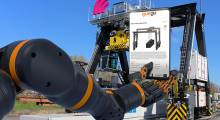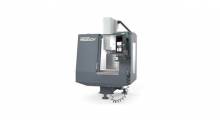In the U.S. Roadmap for Material Handling & Logistics, a report compiling what more than 100 industry thought leaders had to say about the future of material handling and logistics between now and 2025, several topics were discussed.
Among them,10 major trends in the economy, technology and society that will shape the future of the industry were outlined. They include:
-
The growth of e-commerce
Relentless competition
Mass personalization
Urbanization
Mobile and wearable computing
Robotics and automation
Sensors and the Internet of Things
Big Data and predictive analytics
The changing workforce
- Sustainability
What struck me about the Roadmap is the key role of automation in potentially addressing each and every one of these 10 trends. Granted, the term ‘automation’ has different meaning based on your reference point. To some, a warehouse management system (WMS) is automation, as it replaces paper and automates your people process. To others, ‘automation’ means conveyor/sortation technology, and still others picture the lights-out, full-blown automation that many companies will never need in their facilities—much less be able to afford.
E-commerce has certainly been the beneficiary of automation. Can you imagine same day delivery from a large ‘Amazon-like’ distribution center running solely on paper pick slips — no WMS, or no conveyor/sortation or automated storage and retrieval (AS/RS) system in place? It would be utter chaos.
Urbanization means establishing distribution operations within landlocked, high-value real estate, where building up (and not out) with automation can make sense.
The changing workforce, with qualified workers dwindling in numbers (and aging in years), has prompted more facilities to switch from person-to-goods to goods–to-person processes, choosing to install ergonomic, automated pick stations, or even robotic or automated pick stations.
Even sustainability, where the green supply chain has often been an oxymoron, is seeing the benefit of automation, with AS/RS automation solutions converting the energy created by slowing or stopping AS/RS cranes into electricity (much like hybrid cars).
Automation doesn’t have to be an all-in concept either. There are many ways to apply automation incrementally at your facility, and gain benefits at every level.
No matter what path the material handling and logistics field takes on the Roadmap to 2025, automation is going to play a critical role moving forward, just as it does now.
Related: AS/RS the “Backbone” of an Automated Material Handling Logistics Solution

Article topics
Email Sign Up


















